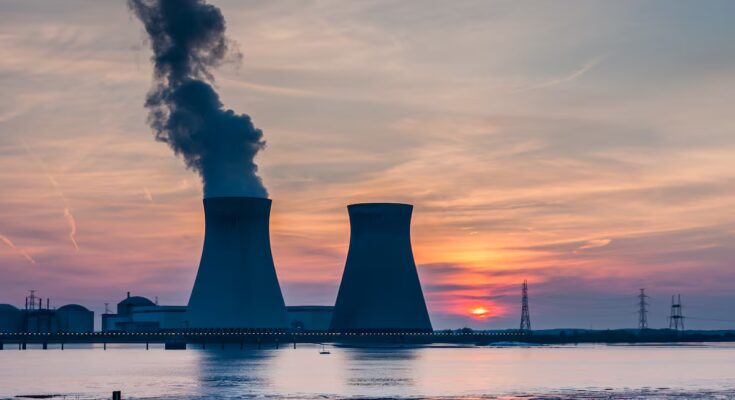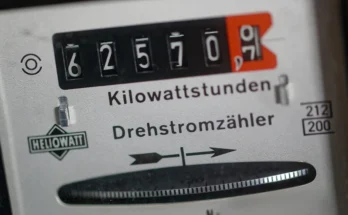Nuclear fever is in full swing. After a decade of bear investment following the 2011 Fukushima power plant accident, the war in Ukraine and the race for artificial intelligence have forced many countries to reinvent their energy supply, whether by leaving behind Russian oil or powering data centers. Nuclear power is resurgent and the stock market doubled down on its commitment to the sector after the US government announced on October 28 a €68.75 billion public-private contract to build large-scale nuclear reactors. Cameco, the world’s largest uranium miner and one of the winning bidders, rose 23% that day, its biggest daily increase since 2008.
Optimism is consolidated this year among investors towards this sector: referenced funds (ETFs) on the shares of nuclear companies will return more than those of any other subsector on the stock market in 2025, according to a ranking drawn up by Bloomberg. According to data from early November, atomic ETFs generated returns of 65%, five points above the second on the list: funds linked to metals used in sustainable energy, such as copper or platinum. The stars of the stock market, artificial intelligence and defense, don’t shine as brightly in ETFs. Their funds yield only 30% and 40% respectively.
Barclays experts point out in a report dated October 17 that “a favorable policy environment is emerging, as governments identify nuclear energy as a clean and robust source”. Nuclear runs almost 24 hours a day, which is impossible for solar or wind. For this reason, a plant like Cofrentes (Valencia) can supply around two million homes per year, while the future wind farm of Maestrazgo (Teruel), planned for 2026 as the largest in Spain, will be around 550,000.
Before October’s reactor construction contract, the United States had already provided billions in loans and tax breaks to the sector starting in 2021. France will set aside around 50 billion euros to build new reactors through 2050. Japan, which closed all its plants after Fukushima, plans to triple the weight of the atom in its energy production to 20% over the next five years, including building new plants. Japan’s largest nuclear power operator, publicly traded Kansai Electric Power, began studies last July to build the country’s first nuclear reactor after the 2011 accident. To sustain this political support around the world in the long term, Barclays adds, the sector will need to improve waste management.
The industry has managed to beat the market in full nuclear fashion. The two largest sector funds (Global) In 2025, both products performed 80% and 70%.

Too many risks in 2026?
There are no investments without risks and nuclear investments are no exception. The feverish demand for energy from data centers has given wings to the sector on the stock market, but analysts point out the numerous conditions that make it volatile: nuclear energy is many times more expensive than renewable energy, the construction of new plants depends on political decisions and the most promising technologies have not yet been tested.
The last few weeks already give clues to the future of nuclear values. According to analysts, despite strong progress over the year, nuclear sector funds have lost ground due to concerns about uranium shortages and dependence on the prospects for the development of artificial intelligence. In the week of the announcement of the construction of plants in the United States, the yield for the year reached 90%; it has since been corrected to the current 65%. This instability points to a trend: Bloomberg predicts “erratic movements” in nuclear stocks in 2026, as the sector becomes increasingly dependent on demand from the artificial intelligence sector. The only certainty about nuclear power is the thousands of years it takes for radioactivity to degrade in nature.
Which companies do they invest in?
These funds invest in companies along the nuclear chain with very different business models. Each with its own risks. Miners Cameco and Uranium Energy are up 67% and 73% respectively this year. The future is less bright. The mining sector risks the exhaustion of its deposits: mineral production will be halved between 2030 and 2040, according to estimates by the World Nuclear Association, the sector lobby. It takes a miner up to 20 years to start extracting uranium from the moment he finds a new reserve.
Electricity companies, such as Constellation Energy (with a stock market rise of 50% in 2025), for their part are dealing with the additional costs in building reactors and with the fact that nuclear technology is not competitive in price, as it could have been in the past. According to a report by the Organization for Economic Co-operation and Development (OECD), the cost per kilowatt generated of a newly built nuclear power plant is 3.5 times higher than that of a solar park. And 2.5 times more than wind power.
No private power company has the capacity to finance a new reactor without direct public support or guaranteed prices. “State participation is essential to facilitate bank financing, ensuring predictable cash flows and taking on construction risk,” says the International Energy Agency, the OECD’s energy policy arm.
Faced with the challenges of building new traditional reactors, the funds are also betting on emerging technology companies. Among Global X and VanEck’s three largest holdings is Oklo, a company funded with millions of dollars by the US government from 2021 to build small nuclear power plants powered by recycled uranium. With a market capitalization of just $15 billion, Oklo has seen its shares nearly quintuple this year, even though its business is mostly promising. Its first facilities, which have pilot permits from the US administration, are expected to come into operation in 2027.
Meanwhile, expenses continue to rise, which has dragged budgets into the red. Oklo reported third-quarter results this week, with losses 2.5 times higher than expected. The Bloomberg analyst consensus indicates that the stock will appreciate only 8% over the next 12 months.
The mini reactors produced by Oklo represent, according to analysts, the great expectation of the nuclear fever. “They eliminate the risks of large pipe breaks and simplify system design, reducing risk. They can be used flexibly and are manufactured in the factory, allowing for shorter construction times,” Bank of America explains in a report this month. Mini reactors (SMRs) take up up to six times less space than conventional nuclear power plants and can be built in around three years, compared to the more than six years theoretically required by the latter. As such, they have attracted interest from governments and tech companies to power AI: Google and Amazon signed multimillion-dollar deals in 2024 to build their own. According to Bank of America, the mini nuclear reactor market in the United States could mobilize up to one trillion dollars in investments between now and 2050, about 70 times more than what has been collected so far.
Betting on metal?
Some funds, such as Sprott Physical Uranium and, to a lesser extent, Global X Uranium, take nuclear fever to another level by purchasing physical uranium. In this sense, speculation is less widespread due to the Tough regulation: in the West there are only three deposits where physical uranium can be stored. Spot metal (that traded on the market) appreciated by 20% in 2025, to just over 80 dollars, according to Cameco data from the end of September.

The price recovered half the value lost between 2024 and early 2025, when it underwent sharp corrections as energy companies stopped buying it to fill their inventories. The price increase also benefited from Russia’s cut in exports of enriched uranium to the United States in retaliation for sanctions, which increased demand for the metal from U.S. mills.
“We hope that purchasing activity will resume soon. Therefore, demand continues to increase while supply has remained limited, limited by prices that are too low to encourage mining investments,” he explains in a comment to Five days Marco Mencini, head of analysis at Plenisfer Investments SGR, a manager with 1,790 million euros in assets who invests in uranium. The price has to increase further amidst the Metal shortage predicted for coming decades. Radioactivity, the only thing that lasts, is not traded on the stock exchange.


